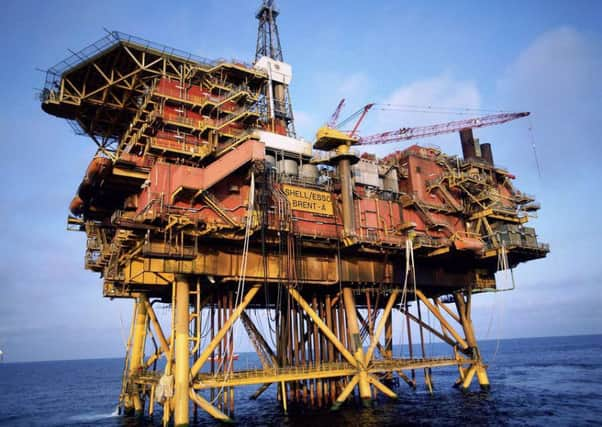Shell to appear in court over North sea oil spill


The spill at the Gannet Alpha platform, 113 miles (180km) from Aberdeen was the worst in a decade and the pipeline reportedly leaked more than 200 tonnes of oil.
Aberdeen Sheriff Court will hear the case on Tuesday with charges expected to cover oil pollution, pipeline safety and health and safety regulations. The Crown Office and Procurator Fiscal Service would not confirm the exact criminal charges before the hearing.
Advertisement
Hide AdAdvertisement
Hide Ad• READ MORE: Shell fined for leak on platform where workers died
The platform is operated on behalf of Shell UK, Exploration and Production UK Limited and the leak was discovered about 300ft (91m) under the surface.
A spokesman for Shell said: “Shell UK is expecting the outcome of the Gannet prosecution on Tuesday 24th November. This follows the August 2011 oil spill from a subsea pipeline operated by Shell in the Gannet field in the Central North Sea.”
In August 2011, Shell UK confirmed the leak in a flow line to the platform, shutting the subsea well. Initially they reported the sea surface affected as around 31km by 4.3km with the sheen moving west.
They stated: “Shell takes all spills seriously, regardless of size and we have responded promptly to this incident.
“Our current expectation is it will be naturally dispersed through wave action and will not reach shore. The weather currently is southerly winds of 25 to 30 knots and the sea state is some 2 meter waves.”
All authorities including the Maritime and Coastguard Agency and Health and Safety Executive were kept informed.
• READ MORE: Shell to look at North Sea assets amid cost cutting
Advertisement
Hide AdAdvertisement
Hide AdInitial estimates were about 1300 barrels of oil were released with a residual 5 barrels a day for a period.
Later that month Shell reported that 72 concrete mats were placed on to the flowline to secure it to the seabed. In November that year, they vented trapped gas.
In 2012, Shell began pumping oil left in the pipe into a tanker after maritime salvage was agreed with the secretary of state. Taps were put into the pipe and the oil pumped through them. The pipeline was then to be flushed clean and left on the seabed.
Inspectors from the Department of Energy and Climate Change (DECC) opened an investigation along with others into the spill and
In 1993, more than 85,000 tonnes of crude oil were spilled when the MV Braer ran aground off Shetland but only a small amount reached land.